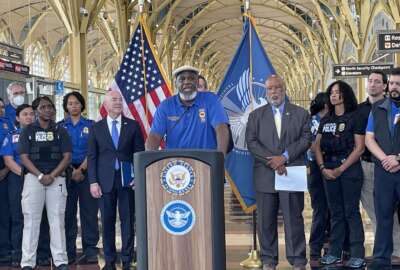This agency could stop your paycheck cold
The National Finance Center is technically deficient, suffers from poor internal and external communications, and provides sub-par customer experience, according to...
The Biden administration has made better customer experience a priority for federal agencies. What if the agency’s customers are other federal agencies?
That’s the case for the National Finance Center, the payroll and financial shared services provider operated by the Agriculture Department from New Orleans. The NFC issues paychecks for some 600,000 federal employees every two weeks. It offers 23 financially-related applications.
It’s also technically deficient, suffers from poor internal and external communications, and provides sub-par customer experience. Those aren’t my opinions; they’re the findings of a new and widely reported study. And, according to the study by the National Academy of Public Administration, “NFC’s future is at risk without prompt action.” The authors add, “Should NFC fail, the consequences would be felt immediately by the hundreds of thousands of federal employees working for organizations like the Department of Homeland Security, Department of Justice, and NFC’s other approximately 170 clients.”
When I spoke with Margie Graves, a co-author of the study and former deputy federal chief information officer, she agreed this is a “holy cow!” report, except that people are using a word other than “cow.” Graves, now with the IBM Center for the Business of Government, said the NFC may not be the only neglected shared service provider. To its credit, the NFC itself commissioned the NAPA study.
This is the same National Finance Center that kept on ticking, like the proverbial Timex watch, when Hurricane Katrina damaged its building in 2005. A 2017 hurricane wrecked its building, so people work in a rigged-up complex of temporary structures. It had a good continuity of operations plan and a dedicated staff, some of whom had experienced their own losses in the mercurial Gulf weather.
Today, customer agencies are “notably” dissatisfied for a number of reasons. Employees have low morale and poor work-life balance. The technology of the NFC is “in need of modernization.” NAPA found “antiquated IT systems and inefficient manual processes” that have degraded customer service. The technical conditions — the main feature of which is a COBOL mainframe environment of yesteryear — have “created a rising risk of service impairment, disruption or possible cyber event.” The Center’s processes are “sluggish and inefficient.”
A holy %$@(*$! report indeed.
Graves said to get to where it needs to be, the Center’s technology base needs an immediate “stabilization,” and then a long-term modernization.
But the NFC’s problems include people, not just lack of investment in technology. The report points to attrition, people leaving but not replaced. The command structure lacks people to support technical transformation, and customer and employee experience.
In an all-too-familiar scenario, the NFC went without permanent leadership for four years.
My question: How could things get this far off course? NAPA cites classic causes. One reason is that it’s budget is covered by fees from customer agencies, not appropriations. Among other legislative constraints, NFC has limits on what it can charge beyond direct costs. So there’s not much left for capital improvement.
Another is that it’s something of a red-headed stepchild (my words) for the Agriculture Department. Odd, given that the NFC has been part of USDA for 50 years.
Incessant leadership turnover and a string of acting officials have limited the Center’s ability to make a long-term plan and stick to it. NAPA points out that even now, nine senior positions remain open, including human resources director and Payroll Operations Directorate associate director. But it also needs programmers and people to sort out what NAPA calls the Center’s “spaghetti code,” much of which lacks documentation.
The simple solution would be to simply outsource the NFC functions to a commercial payroll and financial services company, right? Graves acknowledged that possibility but said that in reality, such a move would take years.
“It’s not like there’s a place to migrate or that there’s anything immediately available where you could offload,” Graves said.
Otherwise, NFC, USDA, the White House and Congress need to get their heads together and agree to fix this situation.
Technical debt, insufficient workforce, spotty leadership — phenomena that occur too often across the government. As Graves noted, it’s not just the National Finance Center.
Those who engage in the endless political debates about the size and scope of government never seem to agree on one point that would seem incontrovertible: If you’re going to have government do something, do it right.
Copyright © 2025 Federal News Network. All rights reserved. This website is not intended for users located within the European Economic Area.
Tom Temin is host of the Federal Drive and has been providing insight on federal technology and management issues for more than 30 years.
Follow @tteminWFED







